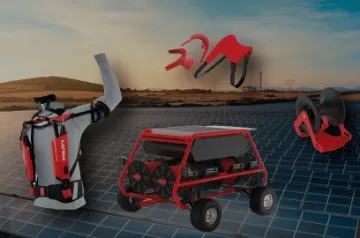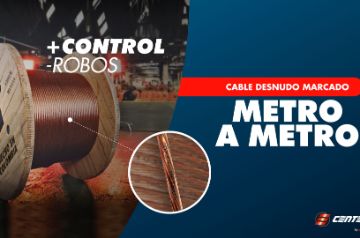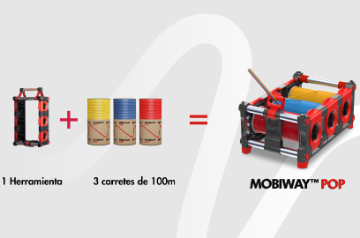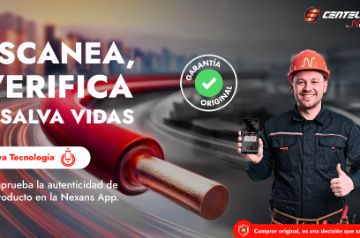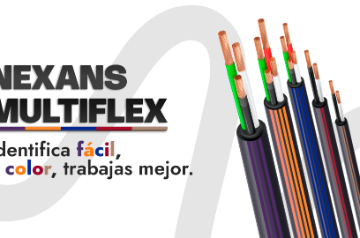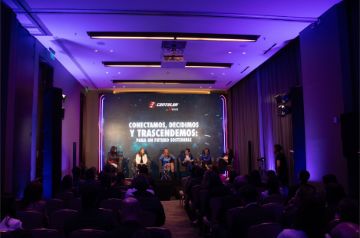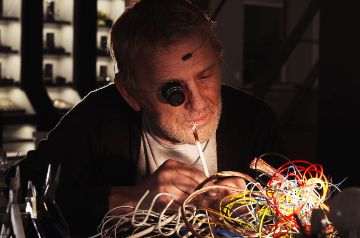- Markets
- Catalogue
- Services and solutions
- Company
- Newsroom
- Tools & Resources
- Documents
- Nexans Insights
- Search
- Contact us
- Compare
- Sign in
Nexans copper odyssey

Turning resource scarcity into competitive advantage
Copper, the first metal worked by man at the dawn of the Neolithic revolution and at the heart of the second industrial energy revolution at the beginning of the 20th century, is today one of the pillars of the ongoing energy transition. Boosted by the widespread use of electric vehicles, the proliferation of wind farm projects, the modernisation of electricity grids, the renovation of buildings and investment in the factories of the future, copper is everywhere. But with resources becoming increasingly scarce, geopolitical tensions and the need to protect the planet, the electrical cable industry is having to reinvent itself around new sustainable business models. Nexans is at the forefront of this transformation thanks to its history, its early investment in the field and its strategic vision of a model combining responsibility and performance.
Copper, from predicted shortage to future laboratory for the circular economy
The electrical cable industry, which has already undergone many transformations in its long history, is facing a new challenge. The proliferation of electrification projects required by the energy transition is leading to an explosion in demand for electricity, and therefore an expected increase in global copper consumption, which is expected to reach 39 million tonnes in 2030 (compared with 13 million in 1995 and 29 million in 2020). At the same time, we must cope with the predicted scarcity of mining resources, limited by an annual production of 24 million tonnes over the next 5 years.
The price of copper doubled during the Covid-19 pandemic providing a foretaste of the pressure that awaits cable producers. This equation depends on access to an increasingly disputed resource, and on a price adjustment that weighs heavily on their business models, given that copper can account for up to 70% of the cost of cables.
Although the reuse of copper scrap is a long-standing practice in the industry – Nexans has been doing it for nearly 40 years – it has become imperative for the entire industry to get involved. However, the 9 million tonnes of copper currently produced from recycling will not be enough to make up for the production shortfall and satisfy the increase in demand.
A difficult transition lies ahead, after almost a century of an economy driven by waste and disposability. We have now entered the age of recycling, the age of the circular economy. This shift implies a complete rethink of all the company's activities, from upstream to downstream, from design to distribution, including the key production stages.
We are in fact at the start of a movement that is set to accelerate, because even though less than a third of manufacturers have begun transforming their value chains beyond the core plants, more than 80% of French companies have already worked on circular business models (INEC survey, “Pivoter vers une industrie circulaire”, Dunod, 2022).
Pivoting towards the circular economy to combine sustainability and profitability
Recycling and better control of supplies are no longer enough to define a strategy that meets the challenges. Switching from a linear economy to a circular economy implies a profound change in all the company's business lines, so that the change of model becomes virtuous.
“ I believe in inventing a new business management model, in which the circular economy will be replaced by circular performance. In other words, an ethical and circular model, but not one that is diminishing. ”
Christopher Guérin
CEO OF NEXANS (“POUR ALLER DANS LE BON SENS”, LE CHERCHE MIDI, 2023)A good example of the holistic approach needed to implement a profitable circular strategy is the new range of low-carbon distribution network cables that Nexans has just launched in France. By considering each stage of the value chain and the entire life cycle of a cable, it is possible to reduce greenhouse gas emissions from low and medium voltage cables by 35% to 50%, depending on the product. For example, in addition to using copper, this means using low-carbon aluminium and recycled plastics and guaranteeing the use of renewable or low-carbon energies in cable production.
Christophe Allain, Nexans' Global Portfolio Director Non-Ferrous Metals, points out that to achieve such a result, all business lines must be involved: “This unique offer illustrates our teams’ commitment to sustainable development, from our worldwide Ampacity R&D centre in Lyon to our product plants, including our marketing and purchasing teams and, of course, our partner suppliers.”
This is an essential offering at a time when Nexans' customers are themselves pivoting towards a sustainable economy. Such is the case with Schneider, which is a pioneer in this area by putting circularity and, more broadly, the environment at the heart of a strategy rolled out through a number of programmes: eco-design, use of higher-quality materials, more modular, connected and repairable products, the emergence of “Energy as a Service” models, decarbonisation of value chains, waste-free production plants and leasing offers.
Finally, over and above the economic benefits and the renewed confidence of key customers, the move towards a circular economy is also an asset for the re-engagement of the company's teams. Because the more the change is real and based on concrete objectives and measured results, the more the teams will find their commitment meaningful and motivating.
Exploiting “urban mines” to turn scarce resources into competitive advantages
Nexans, the world's leading manufacturer of vertically integrated cables, has an advantage that gives it direct access to copper cathodes in mines. For the Group, this means controlling its supplies while maintaining the lead it gained many years ago through the integration of its own metallurgy business: the only remaining copper smelter in France – Lens- two in South America – Chile and Peru- and a mega-smelter in Montreal.
This strategy alone is not enough today. We need to supplement these sources of supply by significantly stepping up our recycling efforts. “For our electrical cable production activity, we use up to 6% and 14% recycled copper, depending on our production sites in Lens and Montreal”, says Franck Ruelle, Recycling Services Manager at Nexans, and Philippe Demarez, Director of the Lens site, “and this proportion will only increase in the future.”
Nexans is committed to using urban mines to transform our industry and enter the circular economy. It is essential to improve copper and aluminium recovery from electrical networks in the real “urban mines” that are our cities and our infrastructures, where the level of collection can be improved. To achieve this, the Group has been working since 2008 with RecyCâbles, a joint venture between Nexans and SUEZ. Over the course of 2022, 14,000 tonnes of used cables were processed at the Group's plants. In the future, this collaboration could be extended to other recycling players to develop a circular chain specific to the cable industry. For example, telco operator Orange's historic lines will technically be phased out in 2030. It will therefore be essential to ensure the recovery of this entire copper network, so that it can be recycled and reused. There are other potential initiatives with scrap merchants and waste collection centres, which are essential parts of the jigsaw and therefore at the heart of the circular economy.
In this way, controlling the end-to-end value chain also makes it possible to leverage several parameters which, in addition to lead times and cost prices, can become genuine guarantees of quality and environmental commitments to which Nexans' customers and partners are now very sensitive.
This also involves the long-term management of supply contracts, such as the one just signed for five years with the Polish group KGHM for the supply of copper cathodes, which now also factors in a lower level of carbon emissions by using rail transport between Poland and France. This approach goes hand-in-hand with joint membership of the Copper Mark to promote responsible copper production worldwide. As a result of this policy, the Lens and Montreal sites were awarded this same label for responsible copper production in August 2023.
But the fact remains that for our entire economy to switch to this new model, pioneers must lead the way by demonstrating the benefits for the planet as well as the advantages for new sustainable growth. If copper is often cited as an example of a well-managed circular economy, then the energy cable industry is at the forefront of a “Green deal” that the European Union has begun to roll out since 2019, with ambitious targets for 2030 on the way to carbon neutrality for EU countries by 2050.
Our websites
Select your country to find our products and solutions
-
Africa
- Africa
- Ghana
- Ivory Coast
- Morocco
- North West Africa
- Americas
- Asia
- Europe
- Oceania
